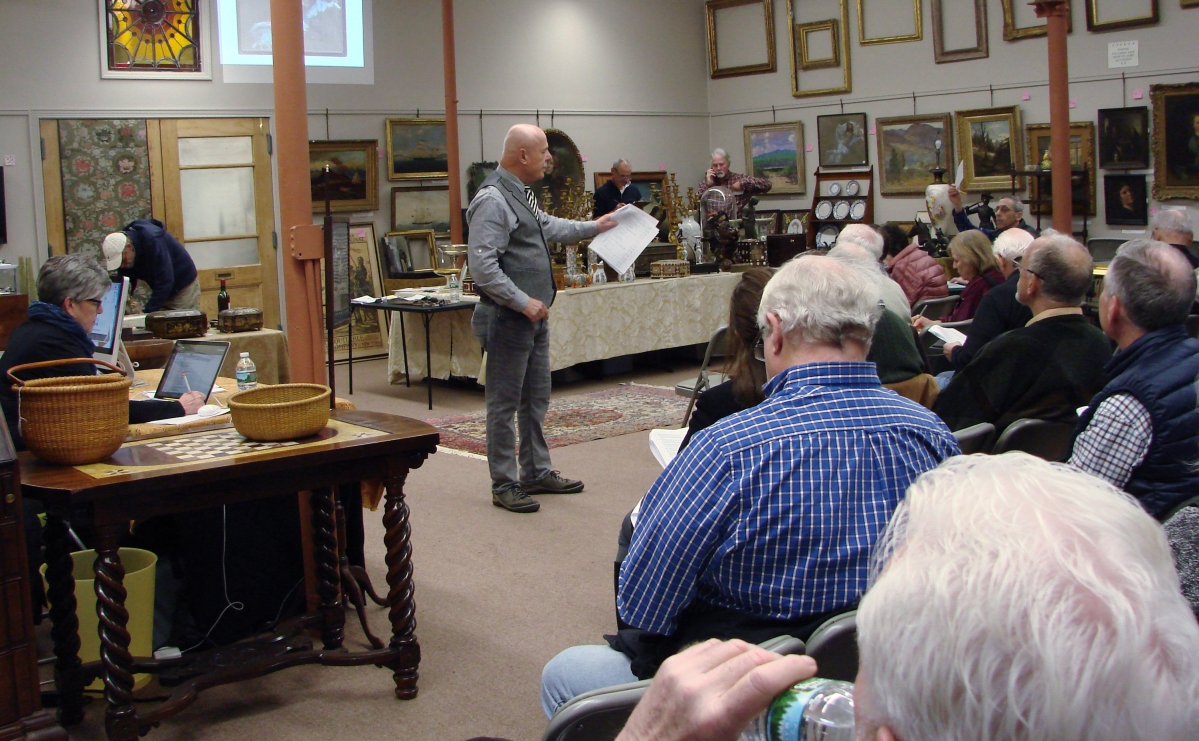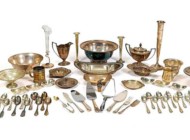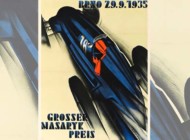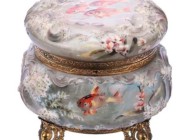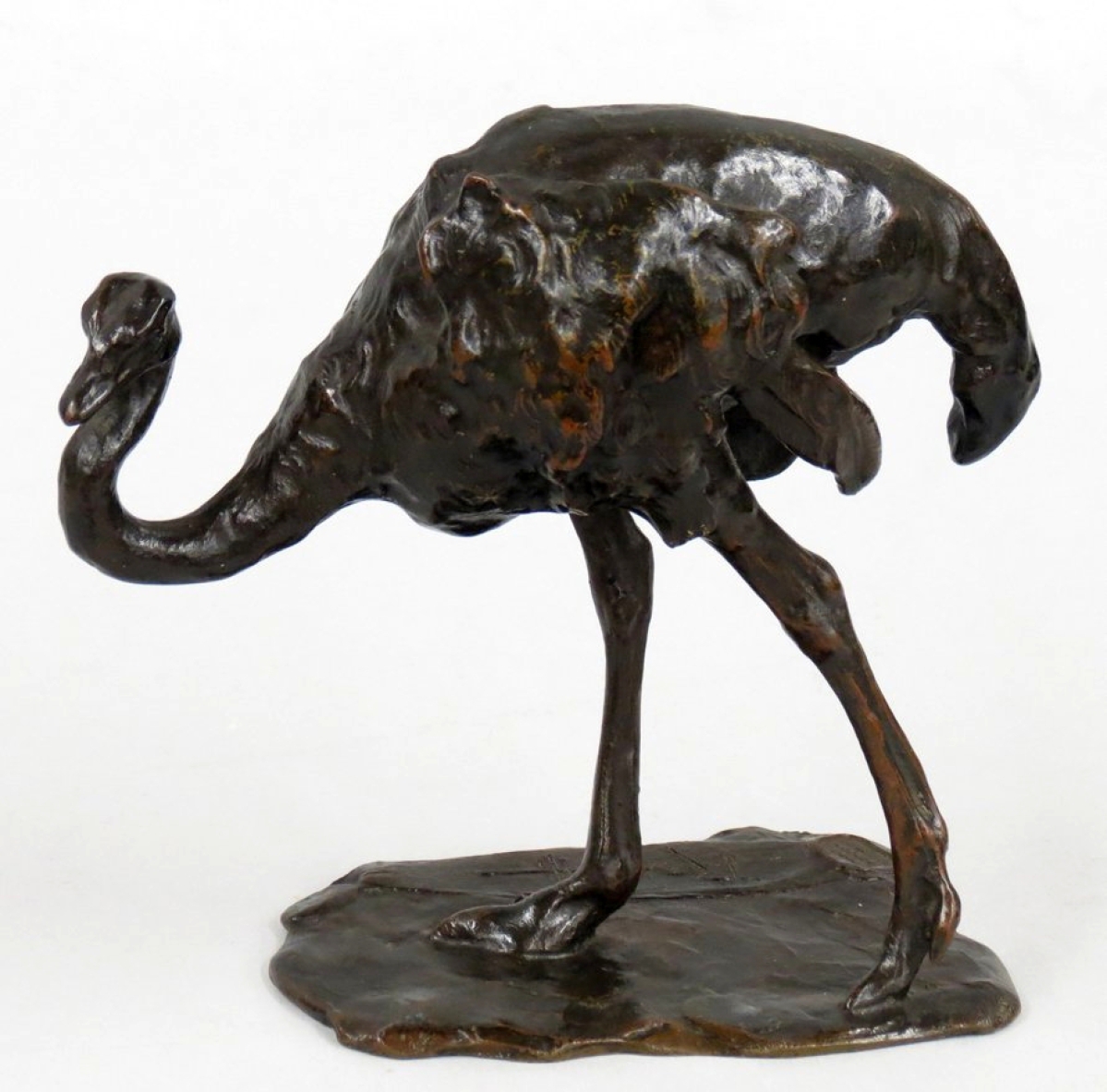
The top selling item in the sale at $24,000 was this 5-inch bronze ostrich by Rembrandt Bugatti, best known for his animal sculptures.
Review by Rick Russack, Photos Courtesy of CRN Auctions
CAMBRIDGE, MASS. — CRN Auctions’ November 6 sale offered a wide assortment of quality material, with the top item being a signed 5-inch bronze ostrich by Rembrandt Bugatti that sold for $24,000. Carl Nordblom and the firm’s co-founder, Karin Phillips, ably assisted by Ezra the auction dog, put together a sale that had several pieces of good American furniture and tall case clocks, Spanish colonial silver and paintings, some 75 paintings and other works of art, tea caddies, porcelains, including a massive Nineteenth Century Mandarin punch bowl and European furniture. About 100 bidders were in the room, several phone lines were in use and internet bidding was available. The sale grossed $700,000.
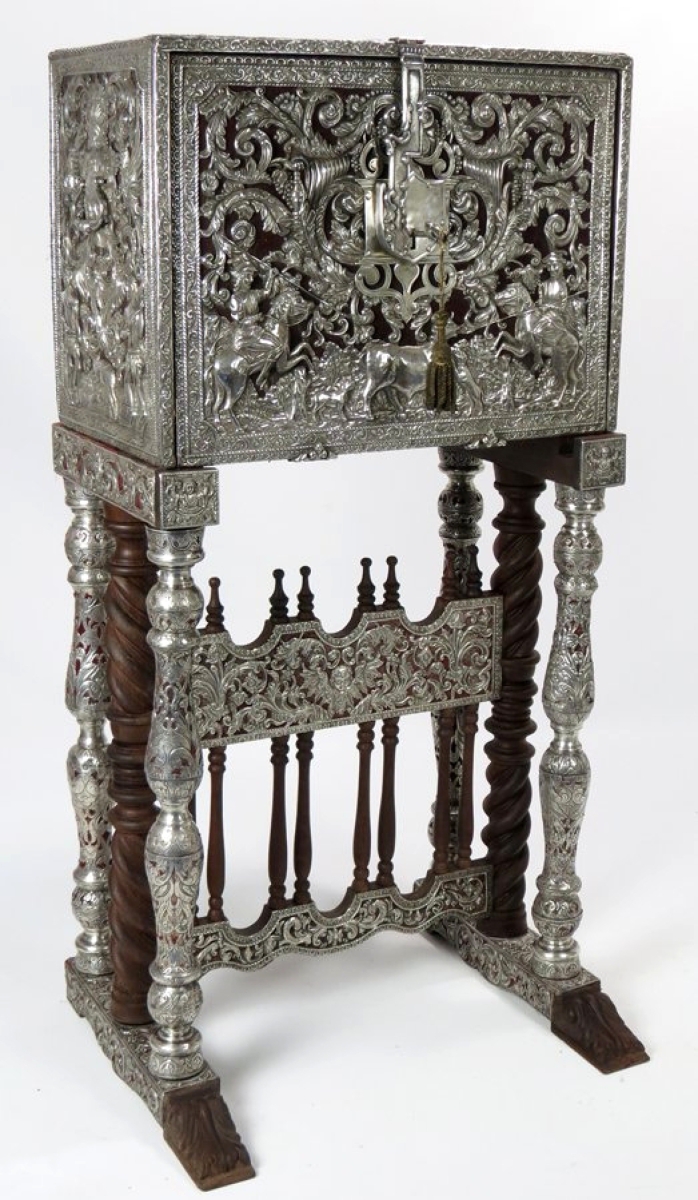
From an extensive single-owner collection of Spanish colonial silver and artwork, this exceptional silver clad, fall front desk achieved $22,800. The silver depicted hunting scenes and the interior drawers were inlaid with bone. It was made in Bolivia, circa 1750–60 and reached $22,800.
During his short career as a sculptor, Bugatti, best known for his animal sculptures, completed more than 150 bronzes, almost all depicting animals. Bugatti worked from live animals at the Paris zoo and later at the Antwerp Zoological Gardens in Belgium.
For the past few sales, Nordblom has been dispersing a single-owner collection of Spanish colonial silver and art, much of it Eighteenth Century. Leading a small grouping in this sale was an exceptional silver clad fall front vargueno, or desk, made in Bolivia, circa 1750–60. Marked by the maker, it brought $22,800. The silverwork depicted hunting scenes with Spanish and indigenous hunters; the interior was fitted with drawers and compartments with figural bone inlay of birds and floral designs on the drawer fronts. On its original silver-clad stand, it stood 51 inches tall.
A heavy, unmarked, Eighteenth Century barber’s bowl from Mexico finished at $5,100, while an Eighteenth Century silver tabernacle front, probably from Peru, earned $1,560. An intricately wrought Spanish colonial cross-form stirrup, made of iron, circa 1750, finished at $16,800, more than four times the estimate. Stirrups like these were made for show or ceremonial events and they were often adorned with religious images. Their use was outlawed by royal decree in 1772, because they were considered harmful to the horses.
A very interesting vellum document signed by President Andrew Jackson in 1832 included a history lesson. Karin Phillips, who does the research and cataloging for Nordblom, determined that the document was known as a passport or “safe passage.” The top sheet had a scalloped edge, identifying it as a ship’s passport which was used for US vessels sailing in the Mediterranean in the late Eighteenth and Nineteenth Centuries. The passports resulted from an agreement with sultans along the Barbary coast in 1795 to allow unfettered passage of American ships in return for payments to the Barbary “pirates.” The states of the Barbary Coast of North Africa (Tripoli, Algiers, Morocco and Tunis) were controlled by sultans who demanded annual tribute in exchange for safe passage. Ship’s cargo, crew and the ship itself could be, and often were, taken for ransom or enslavement without passports as proof of payment.
The passport’s scalloped top edge indicated that the top portion had been cut and sent ahead to be matched when the ship arrived in the Mediterranean. Justin Cobb, Captain’s Quarters, Amherst, Mass., said that the value of these passports is often determined by the history of the ship and its captain. In this case, the ship, the Undine, was out of Duxbury, Mass., Cobb said, which would increase the interest to New England collectors. The document lists the ship as 253 tons and having a crew of 12. The practice officially ended in 1831, although some passports continued to be issued up until the time of the Civil War. This one sold for $1,200.
The sale included seven tall case clocks. An unusual circa 1750, musical Dutch clock signed by Johannes Logge, Amsterdam led the group. The clock had six pairs of
tunes that would play on the hour and half-hour. The dial could change the tunes and two subsidiary dials could silence the music and strike. The case was of burled walnut, it had three angels blowing horns as finials and, in working condition, it reached $9,000. A Boston Queen Anne clock, made by Thomas Clark, circa 1765, earned $7,200. Tall case clocks by Clark, who was trained in London, are not common.
Surprising everyone, a very early and unusual butterfly table, illustrated on plate #992 in Wallace Nutting’s Furniture Treasury, brought $13,000, well over estimate. It was a very distinctive style and at least one observer said he thought it might be a Southern piece, although it was cataloged as Massachusetts. An early tavern table in old black paint with nicely turned legs finished at $9,000, also well over estimate. Immediately following the tavern table was a pair of Spanish foot William and Mary side chairs that Nordblom said had been with the table in the Connecticut home that he got them out of. The pair, also in black paint, fetched $1,440. A circa 1770 Connecticut River valley, two-part, broken-arch bonnet-top highboy, with vine carved pilasters, finished at $13,200. Similar examples are discussed in Kugelman and Lionetti’s, Connecticut Valley Furniture. Also doing well was a circa 1750–60 Massachusetts Queen Ann tea table with candle slides on each end and a scalloped apron. It went out at $9,000.
After the sale, Carl Nordblom said that the sale went better than he had expected in almost all areas. “We had more than 100 people in the room, more than 600 online bidders and another hundred lined up for phone bidding. It was the kind of sale I really like — diversified. That way there’s something for everyone. The American furniture was strong. The butterfly table and the tavern table did really well and so did some of the European things, like the pair of mirrors, the decorated piano and the harp that came from the same home. It was our last sale of the year and we are all pleased with it. Time for a little relaxation now.”
All prices reported include the buyer’s premium. For information, www.crnauctions.com or 617-661-9582.

